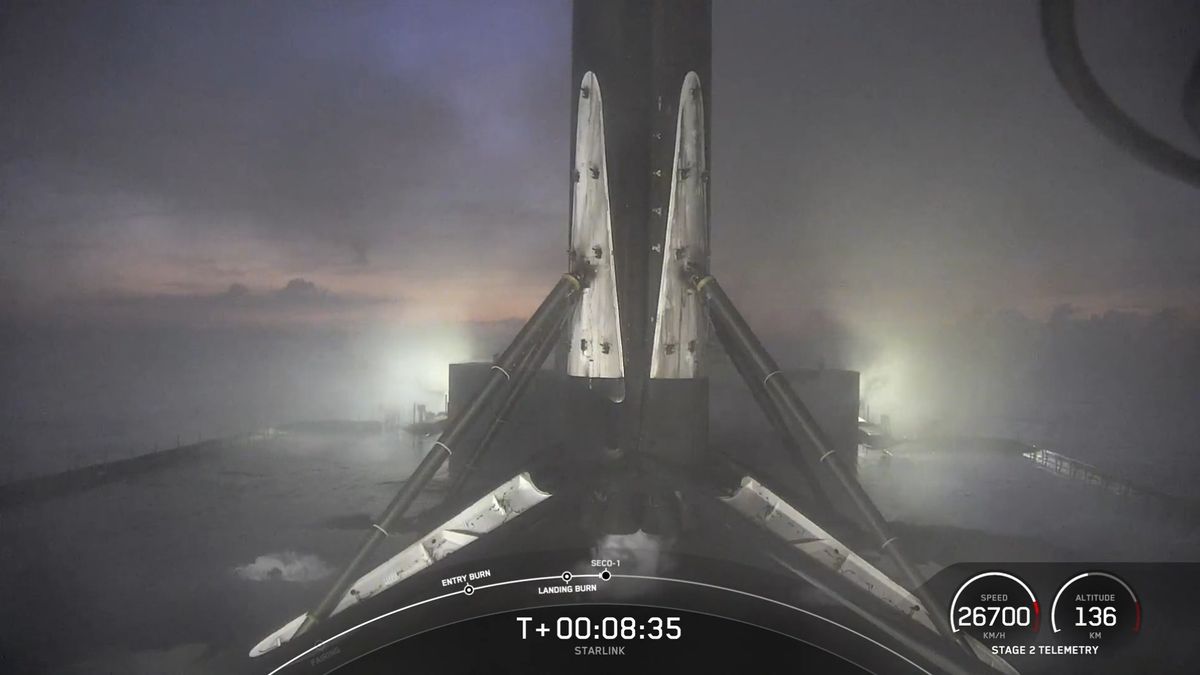Sign up for CNN’s Wonder Theory science newsletter. Explore the universe with news on fascinating discoveries, scientific advancements and more.
When a new comet appears in the sky, there is often excitement. But things don’t always end well for the ancient celestial objects, made of ice, frozen gases and rock, as they near the sun — and an untimely demise appears to hold true for Comet C/2025 F2 (SWAN).
All signs suggest that the celestial object, which resembled a fuzzy green patch, has disintegrated in the last couple days, said Qicheng Zang, a postdoctoral fellow studying small body astronomy at Lowell Observatory in Flagstaff, Arizona.
The latest ground-based observations from telescopes do seem to imply the comet has fallen apart, said Dr. Karl Battams, a computational scientist within the Solar and Heliospheric Physics Branch at the US Naval Research Laboratory in Washington, DC.
Additional observations will help confirm whether disintegration is the true cause of the comet’s apparent outburst and dimming.
“There’s a remnant dust cloud that should continue to be telescopically visible for a few more weeks, but it’s spreading out and fading,” Zang said.
Sky-gazers in the Northern Hemisphere can see the comet’s remnant in the early morning.
Prior to the disintegration, part of the hype around the comet was the fact that it was only recently discovered, and the comet’s closest pass of the sun on May 1 would present a once-in-a-lifetime viewing opportunity, likely not reappearing for hundreds of thousands of years — or leaving the solar system all together.
Now, sky-gazers can essentially see the comet remnant’s final passage.
The object takes its name from the Solar Wind ANisotropies, or SWAN, instrument on the Solar and Heliospheric Observatory, or SOHO, spacecraft, a joint project of the European Space Agency and NASA. Amateur astronomers Vladimir Bezugly from Ukraine, Michael Mattiazzo in Australia and US-based Rob Matson each independently spotted and reported the object, known as Comet SWAN or SWAN25F, while looking through images taken by the SWAN instrument at the end of March. The Minor Planet Center officially designated it as C/2025 F2 (SWAN) on April 8.
The three astronomers “noticed a faint smudge, indicative of a comet, that seemed to move across the sky over a period of a few days.”
“Since no comet was known to be in that part of the sky at that time, they correctly assumed it to be a new discovery,” Battams said.
Battams is also principal investigator for the Large Angle and Spectrometric Coronagraph instrument suite, a set of three telescopes on the SOHO spacecraft that takes images of the sun’s atmosphere.
Battams recommends looking “low to the northeast horizon an hour or two before dawn” to see the remnant.
“It will only be visible from the northern hemisphere until very early May, and then will gradually rise in the southern hemisphere skies,” Battams said in an email.
Just remember to look low toward the horizon, rather than high in the sky, to see it.
The fragmenting of a comet
Some reports had shown that the comet’s initial brightness faded slightly within the last few days, Battams said.
Now, astronomers recognize that this slight dimming was likely a sign of the comet’s fate.
“It’s now likely the surge in brightness after the comet was discovered was actually the comet beginning to disintegrate,” Zang said in an email. “When they initially break apart, it exposes all the ice in its interior to the Sun, causing them to turn to gas (which we saw as the green glow that made the comet bright) all at once.”
As the ice runs out, gas gradually stops being released, and the comet dims, he said.
“It looks like we’re now pretty much at the point where the ice/gas is just about all gone, so all that’s left is the dust.”
Astronomers suspect the comet came from the Oort Cloud, a reservoir of icy bodies thought to exist at the edge of our solar system far from the warm reach of the sun.
“Every now and then, an Oort Cloud comet will get gravitationally ‘nudged’ out of this reservoir and will begin to fall in towards the Sun,” Battams said in an email. “We think this comet has been heading inwards for about 35,000 years, although it’s difficult to be too precise about those numbers.”
EarthSky has reported that recent observations suggest the comet completes one orbit around the sun every 2.1 million years.
As comets approach the sun, our star’s heat causes them to release gas and dust, which provide their signature tails.
Bigger comets, which are heavier, don’t tend to disintegrate as they near the sun. But it’s more common for smaller comets because as they release their gases, the celestial objects spin rapidly until they fly apart, Zang said.
“The extreme solar radiation was more than this comet could handle,” Battams said. “Scientists are still trying to work out the specifics of what drives fragmentation like this. It is almost certainly a combination of factors or processes, but fundamentally it’s all due to a comet with a very volatile surface/composition getting too close to the Sun. It is definitely not uncommon, and I’m honestly not at all surprised this one in particular appears to be doing so.”
Last October, the “Halloween comet” disintegrated during its closest approach of the sun.
The object, also known as Comet C/2024 S1 (ATLAS), was discovered on September 27 and quickly earned its nickname following speculation that it might be visible in the night sky near the end of October. But as the comet neared the sun, it broke apart into chunks until it finally evaporated, according to NASA.
C/2024 S1 was a sungrazer, a comet that passes within a distance of about 850,000 miles (1,367,942 kilometers) from the sun. Sungrazers often vaporize due to the intense, hot solar atmosphere.
Comet C/2025 F2 (SWAN) was expected to pass within 31 million miles (50 million kilometers) of the sun in May.
How to spot the fragment
The remnant will appear within the constellation Andromeda in the northeastern sky a couple of hours or so before sunrise, Zang said. Then, the dust cloud will reappear in the night sky toward the end of April. A new moon on the evening of April 27 will make the comet easier to see.
The remnant will be easier for those in the Southern Hemisphere to see in May, according to The Planetary Society.
The celestial object will appear near the constellation Taurus above the western horizon after sunset and appear higher in the sky each night in May.
Discovering a new comet
The SWAN instrument wasn’t designed to pick out comets in the night sky, but it has contributed to the discovery of 16 comets to date, Zang said.
“It’s a unique instrument designed to map out hydrogen in our solar system by looking at a certain type of light that gets scattered by neutral hydrogen atoms,” Battams said in an email. “But comets happen to be a very rich source of hydrogen — primarily by water of water-ice being vaporized by the Sun — and so they often glow quite brightly in the SWAN images.”
Another observation of the comet was made on April 11 by the Virtual Telescope Project. - Gianluca Masi/Virtual Telescope Project.
Zang first observed the comet on the morning of April 2 and has seen it twice since then. He took images of the part of the sky where the comet was said to be, based on coordinates shared by those who found it using the SWAN data, and spotted the celestial object.
Battams said that Zang was the first to observe it from the ground after the amateur astronomers made the SWAN discovery, and his observations were crucial for allowing other astronomers to point their telescopes at the correct location.
Astronomer Gianluca Masi also observed the comet twice using a telescope in Manciano, Italy. Masi runs The Virtual Telescope Project, which offers views from remotely controlled robotic telescopes online.
CNN’s Taylor Nicoli contributed to this report.
For more CNN news and newsletters create an account at CNN.com
.png)
 German (DE)
German (DE)  English (US)
English (US)  Spanish (ES)
Spanish (ES)  French (FR)
French (FR)  Hindi (IN)
Hindi (IN)  Italian (IT)
Italian (IT)  Russian (RU)
Russian (RU) 









Comments